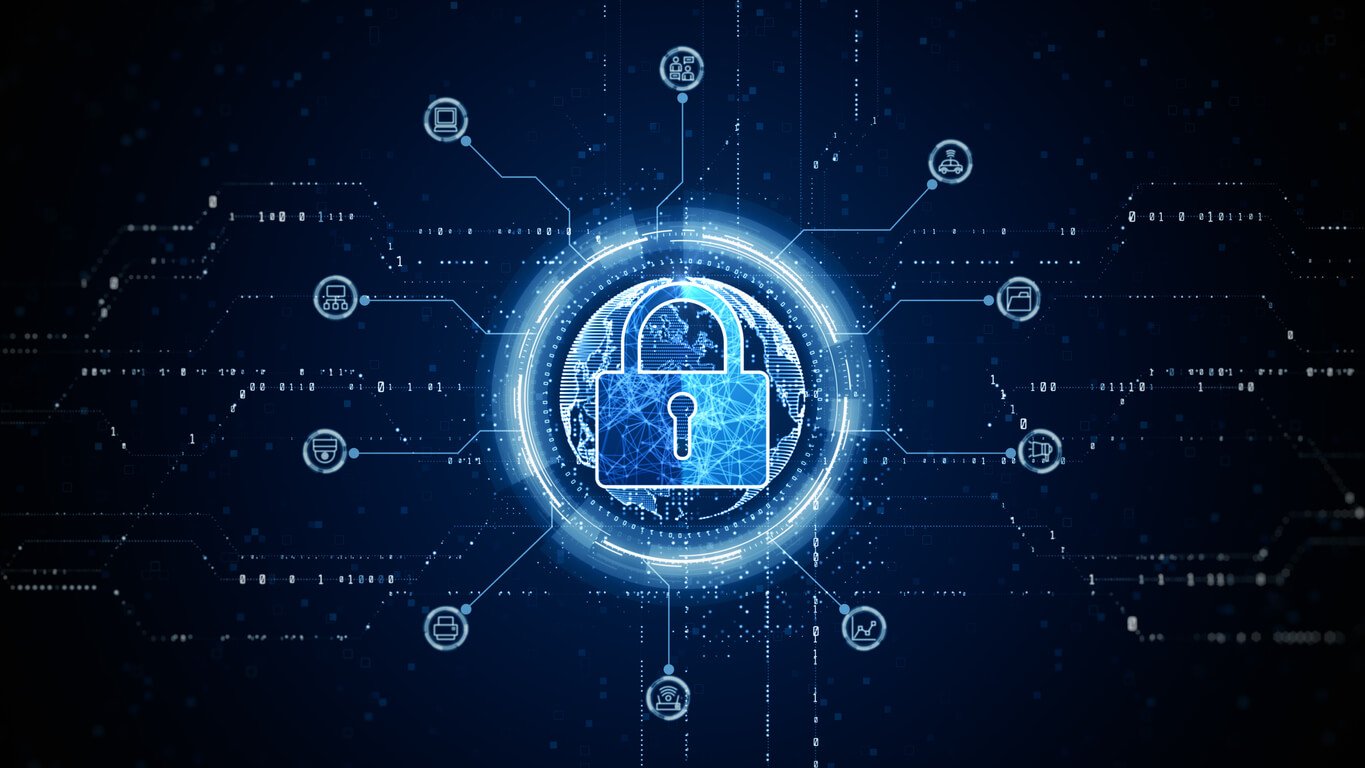Artificial intelligence (AI) is quickly becoming the dominant tech trend across virtually every business sector. But, when it comes to AI and cybersecurity, this level of intelligence is a double-edged sword.
While AI’s advanced algorithms and learning capabilities present opportunities, the same technology arms cybercriminals to craft more complex attacks.
Let’s dig deeper into the world of artificial intelligence and cybersecurity and uncover what this means for your business in 2024.
What is AI in the Context of Cybersecurity?
Artificial intelligence refers to the simulation of human intelligence within computers and other related technologies. In relation to cybersecurity, this level of advanced machine intelligence helps automate complex processes, analyze vast data sets, and detect patterns that often link to common cyber threats.
While there are thousands of use cases and products that leverage AI, the most common applications revolve around generative AI — which is a type of AI that can produce images, text, videos, music, and audio based on predetermined data sets. The most popular of these AI-based generative models include:
- ChatGPT - This product from OpenAI leverages natural language processing (NLP) to analyze text-based data and generate output that mimics human dialogue.
- Jasper - Another model using NLP, Jasper’s specialty lies in content creation and data analysis.
These are two popular models most businesses have either had contact with or know about, with OpenAI’s ChatGPT being the most common after hitting 100 million active daily users just two months after its public release.
The Benefits of AI in Cybersecurity
To help businesses better understand the benefits of artificial intelligence and cybersecurity, let’s explore some of the key advantages:
- Automation of Security Tasks - AI is excellent at task automation. This could include monitoring network traffic, analyzing logs, or pinpointing anomalies. Automation leads to a reduction in an IT team’s workload and provides a proactive approach to cybersecurity awareness.
- Enhanced Threat Detection - AI-driven systems excel in rapid and accurate threat detection, often surpassing the capabilities of traditional methods. They are adept at spotting intricate patterns of malicious activity in a similar fashion to managed detection and response (MDR) systems.
- Predictive Analysis - AI can leverage historical data and trends to spotlight potential vulnerabilities and attack vectors. This predictive capacity is integral to reinforcing defenses against future threats.
The Dark Side of AI in Cybersecurity
While the benefits of artificial intelligence and cybersecurity present an innovative approach to IT cybersecurity management, threat detection, and data analysis, this tech has downsides. Here are several major factors that every business should consider:
- AI and Cyber Criminals - Criminals can leverage AI to create complex threats like phishing emails or malicious code, which demand more advanced defense strategies. This highlights the urgency for adopting comprehensive cyber liability insurance.
- AI-Generated Threats - Detecting threats produced through AI means is becoming more and more difficult. To stay ahead of this evolving environment, businesses should explore additional security measures like managed vulnerability scanning.
- Ethical and Privacy Concerns - A big question surrounding the use of AI revolves around data privacy. While some regulatory bodies have tried to tackle this issue, like with the EU’s GDPR, businesses still need to address these concerns independently to maintain trust and compliance with employees, stakeholders, and clients.
How to Leverage AI While Protecting Your Network
Cybersecurity is a big concern for any business, regardless of size. While AI presents unique opportunities to strengthen IT security efforts, this advanced technology demands a new set of guidelines and strategies.
To begin, businesses need to adopt AI best practices. This includes taking a balanced approach to integration that emphasizes both innovation and risk mitigation. Strategic deployment of AI is also mission-critical. There are many ways to misuse AI, so organizations need to safeguard against these threats while leveraging these new tools in their cybersecurity frameworks.
One key factor in successful adoption and integration is education. Teams, both with direct contact and indirect contact with AI systems, should understand both how AI provides new avenues for growth and strategy development as well as the advanced threats it brings — highlighting the need for robust cybersecurity awareness training.
After initial integration and training, continuous monitoring and updates are critical. While this is true for any new technology adoption, with the rapid pace of AI advancement, businesses need to align strategies with up-to-date information around AI-generated threats. An ongoing commitment here is necessary. IT teams, whether internal or external, must continually monitor cybersecurity defenses to ensure resilience against these shifting challenges.
Lastly, a partnership with AI security experts can prove highly valuable. External security experts enhance a business’s existing cybersecurity posture and can offer critical insights into effective integration and other security measures.
Preparing for the Future of AI and Cybersecurity
The relationship between AI and cybersecurity is only growing. By partnering with the right cybersecurity provider and embracing AI with a strategic, informed, and cautious approach, businesses can protect their network more effectively and stay several steps ahead of the cybercriminals.





